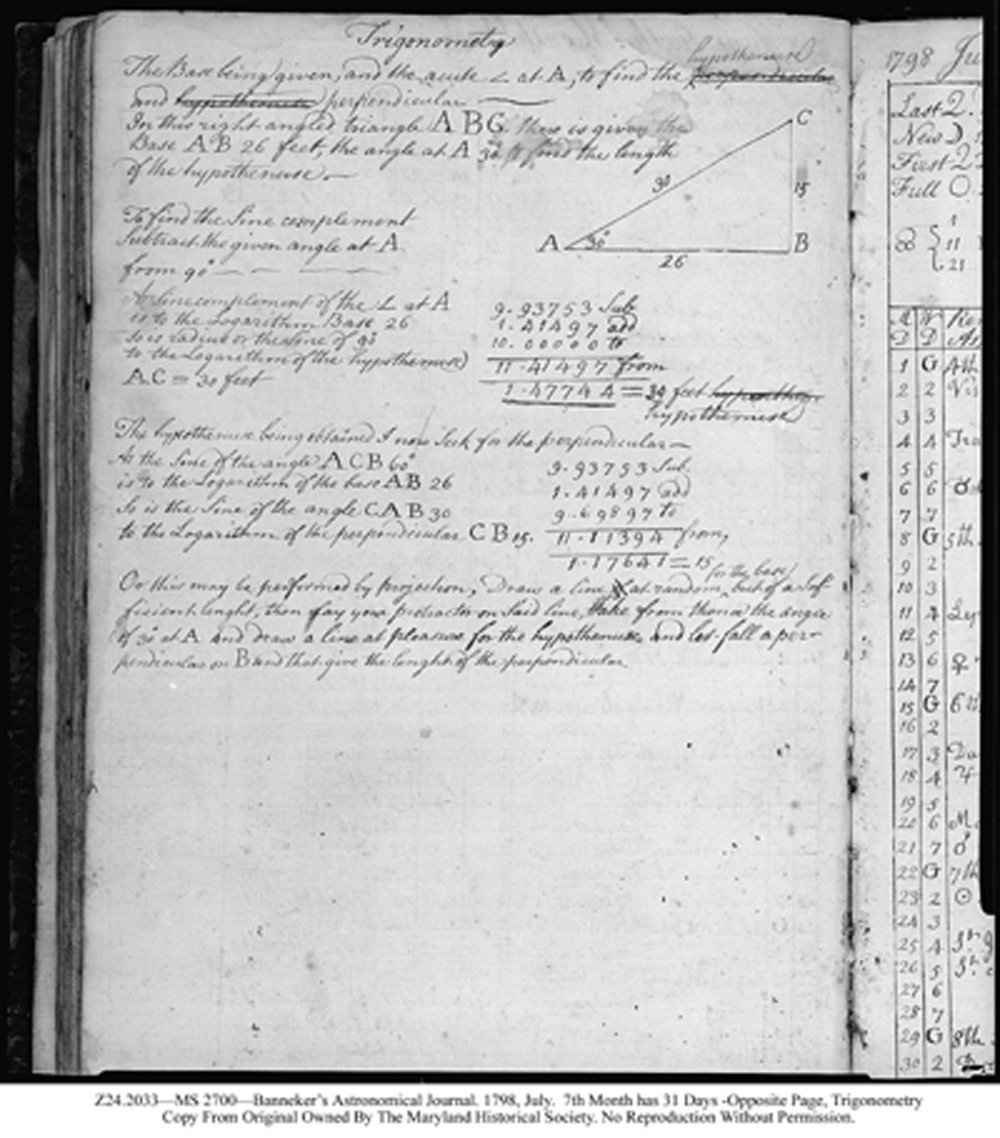- About MAA
- Membership
- MAA Publications
- Periodicals
- Blogs
- MAA Book Series
- MAA Press (an imprint of the AMS)
- MAA Notes
- MAA Reviews
- Mathematical Communication
- Information for Libraries
- Author Resources
- Advertise with MAA
- Meetings
- Competitions
- Programs
- Communities
- MAA Sections
- SIGMAA
- MAA Connect
- Students
- MAA Awards
- Awards Booklets
- Writing Awards
- Teaching Awards
- Service Awards
- Research Awards
- Lecture Awards
- Putnam Competition Individual and Team Winners
- D. E. Shaw Group AMC 8 Awards & Certificates
- Maryam Mirzakhani AMC 10 A Awards & Certificates
- Two Sigma AMC 10 B Awards & Certificates
- Jane Street AMC 12 A Awards & Certificates
- Akamai AMC 12 B Awards & Certificates
- High School Teachers
- News
You are here
Benjamin Banneker's Trigonometry Puzzle
Editor’s note: This article was published in April 2004.
The mathematical puzzles of Benjamin Banneker (1731-1806) have been of interest since he first produced them in the last half of the 18th century and the early years of the 19th. By the age of 21, he was a hero in the territory of Maryland.* Banneker began his life-changing studies of astronomy and mathematics about 1788, the year Maryland joined the Union, when he was lent some books by his friend, the surveyor George Ellicott. Three of these are known: Charles Leadbetter's Astronomy: Or the True System of the Planets Demonstrated (1727); James Ferguson's Astronomy Explained Upon Sir Isaac Newton's Principles, and Made Easy to Those Who Have Not Studied Mathematics (1761); and a book (in Latin) which Ellicott gave his bride as a wedding present.
In one of the puzzles, “Trigonometry,” Banneker demonstrates his knowledge of logarithms as he presents his solution. The question arises as to what book of logarithmic tables could Banneker have been using. The trigonometry page is reproduced here by permission of The Maryland Historical Society, Baltimore, Maryland, where Banneker’s Astronomical Journal 1798, is kept, less than 10 miles from where it was written.

This puzzle also demonstrates Banneker’s humor, for after he gives a generalization of his plan, he creates a specific problem, solves it using logarithms, and sums it all up by implying it could have been done far more simply. He provides us with a neat lesson on reflecting back upon solutions.
________________________
*Banneker’s life can be explored in detail in Silvio Bedini’s Benjamin Banneker, the First African-American Man of Science, Baltimore: Maryland Historical Society, 1999.
Florence Fasanelli, Graham Jagger, Bea Lumpkin, "Benjamin Banneker's Trigonometry Puzzle," Convergence (June 2010)




